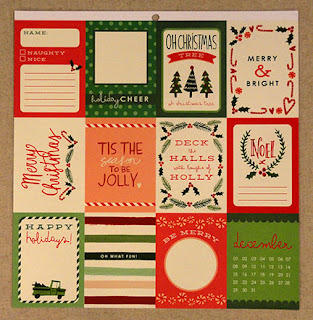Choose four or more favorite seasonal paper prints
to decorate the front of this sides-toward-the-center
double bi-fold card. Front bracket panel with offset inner panel
holds a dimensional poinsettia consisting of
swirl leaf layer, large and medium petal layers,
and top dimensional layer that has four petals
that fold toward center with slot to tuck tip into.
ASSEMBLY: 1. Identify and cut the shapes:
A card front panel B card side panel extension
C accent front half panels (4)
D inside side accent panels (2)
E message panel for card inside (NOTE that there is
a full back inside accent panel included in the file)
F front bracket panel base
G front bracket offset panel
H tendril/leaf swirl design shape
I - K petal swirls
accent panels, sentiment panel as shown.
NOTE that the half panels abut, with offset margins
all around; inner side panels have offset margins around.
Left inner panel (as viewed here) slides under the
bracket 'base' cutout extension which will remain unattached
to cover the "hole" behind the bracket cutout - take care when
applying adhesive to that side panel backside since
a portion will not attach to panel.
5. Prepare the poinsettia petals by adding some curl
to the two largest swirl tips, bending slightly forward
at the base of the 'stem'.
(Also note that these shapes and others in this sample
have had edges ink-distressed for visual dimension.)
8. Tuck the tip of each petal into the adjacent petal's slot,
and glue in place on the underside.
This process should give this top petal section some dimension.
(If you wish to send the card flat, omit this step.)
to decorate the front of this sides-toward-the-center
double bi-fold card. Front bracket panel with offset inner panel
holds a dimensional poinsettia consisting of
swirl leaf layer, large and medium petal layers,
and top dimensional layer that has four petals
that fold toward center with slot to tuck tip into.
ASSEMBLY: 1. Identify and cut the shapes:
A card front panel B card side panel extension
C accent front half panels (4)
D inside side accent panels (2)
E message panel for card inside (NOTE that there is
a full back inside accent panel included in the file)
F front bracket panel base
G front bracket offset panel
H tendril/leaf swirl design shape
I - K petal swirls
2. Prepare the front panel sections by bending at
vertical perforation lines as shown here
(when panels are laid side by side as they will be joined,
bend two outer perf lines as "mountain" folds,
inner perf line and tab perf line as "valley" folds).
3. Overlap and attach the side section inner straight
edge over the main section right side tab.
NOTE that the bracket attachment cutout does not
have a perforation line and therefore remains flat, unbent.
4. Position and attach the outer half accent panels and inner sideaccent panels, sentiment panel as shown.
NOTE that the half panels abut, with offset margins
all around; inner side panels have offset margins around.
Left inner panel (as viewed here) slides under the
bracket 'base' cutout extension which will remain unattached
to cover the "hole" behind the bracket cutout - take care when
applying adhesive to that side panel backside since
a portion will not attach to panel.
to the two largest swirl tips, bending slightly forward
at the base of the 'stem'.
(Also note that these shapes and others in this sample
have had edges ink-distressed for visual dimension.)
6. Assemble the bracket panel two layers, tendril swirl,
and two petal swirls. Adjust for preferred petal rotation
offset, with center punch holes of all aligned,
and glue together near centers only.
7. Assemble the dimensional top petal swirl
by inverting the shape and bending the petals back,
working in clockwise sequence so that each petal
lays on top of its neighbor.
and glue in place on the underside.
This process should give this top petal section some dimension.
(If you wish to send the card flat, omit this step.)
9. Position the top petal unit over the bracket panel assembly,
aligning punch hole. Rotate to achieve desired petal offset,
then glue base "square" in place.
Insert flower center reg. size brad through holes,
and bend prongs back behind the bracket base shape.
10. Position the bracket assembly over the matching bracket
cutout on the base base, and glue the complete bracket
assembly in place.
Here is card shown closed.
























































